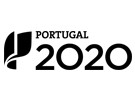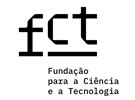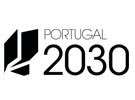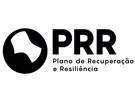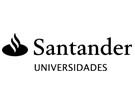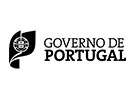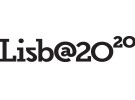



6 ECTS; 1º Ano, 2º Semestre, 42,0 PL + 28,0 TP + 5,0 OT , Cód. 81439.
Lecturer
- Fernando Sérgio Hortas Rodrigues (1)(2)
(1) Docente Responsável
(2) Docente que lecciona
Prerequisites
Not applicable
Objectives
This course unit aims to introduce students to high-level computer programming, specifically through the Python programming language. Upon completing this unit, the student should:
1) Have a deep understanding of the characteristics of this programming language and know how to install and configure the development environment;
2) Be familiar with the main commands of the programming language;
3) Have knowledge of the main existing libraries in Python;
4) Be able to automate routines using control and iteration structures;
5) Be able to write and structure programs in Python using arrays;
6) Be able to write and structure programs in Python using advanced data structures;
7) Be able to write and structure programs in Python using list comprehensions;
8) Be able to process text files, Word documents, CSV, JSON, and web documents, as well as understand the importance of OCR (Optical Character Recognition) in text processing from images and PDFs;
9) Be able to decompose problems into sub-tasks using reusable and anonymous functions;
10) Be able to create and deploy python modules;
11) Be able to execute python modules/scripts from the command line;
12) Be capable of testing and debugging programs;
13) Be able to manage logs resulting from exceptions.
Program
1. Programming in Python
1.1. Why program in Python?
1.2. History of Python
1.3. Characteristics
1.4. Advantages
1.5. Installing Python
2. Introduction to Python
2.1. Comments
2.2. Help in Python
2.3. Input and output of information
2.4. Variables
2.5. Data types
2.6. Operators
2.7. Casting
2.8. Data formatting
2.9. Immutability vs Mutability
2.10. Notebooks in Python
3. Importing and Using Libraries
3.1. Internal modules
3.2. External modules
3.3. Frequently used modules
3.4. Introduction to PyPi: Python's official package repository
3.5. Creating Virtual Environments
4. Control and Iteration Structures
4.1. If
4.2. For
4.3. While
4.4. Break/Continue
5. Simple Data Structures
5.1. Arrays
5.2. Multidimensional Arrays
5.3. Jagged Arrays
6. Advanced Data Structures
6.1. Lists
6.2. Sets
6.3. Dictionaries
6.4. Tuples
6.5. Named Tuples
6.6. Enums
7. List Comprehension and LINQ
7.1. Introduction to list comprehension
7.2. LINQ in Python
8. File Reading and Writing
8.1. Text files
8.2. Image files
8.3. PDF files
8.4. MS Word files
8.5. HTML files
8.6. CSV files
8.7. JSON files
9. Functions
9.1. User-defined functions
9.2. Generator functions
9.3. Lambda functions (MAP, Filter, Reduce)
10. Creating and Sharing Modules
10.1. Introduction to Git (version control system)
10.2. Introduction to GitHub (source code repository linked to Git)
10.3. Synchronizing projects with GitHub using Git and the PyCharm development software
10.4. Creating modules
10.5. Local module distribution
10.6. Online module distribution (PyPi and GitHub)
10.7. Creating packages
10.8. Local package distribution
10.9. Online package distribution (PyPi and GitHub)
11. Command Line
11.1. Executing code from the command line
11.2. Passing parameters
11.3. The `__name__` module
11.4. Main function
12. Exceptions
12.1. Definition
12.2. Types of errors
12.3. Exception handling
13. Logs
13.1. Log message levels
13.2. Log formatting
13.3. Log messages
13.4. Exception handling within logs
13.5. Writing logs to files
14. Introduction to Object Orientation
14.1 Class Definition
14.2 Instances
14.3 Constructors
14.4 Class Static Atributes
14.5 Methods
14.6 Iterators
Evaluation Methodology
Midterm assessment: Test I (60%) + Test 2 ( 40%)
Final assessment: Exam (100%)
Please consult the page in portuguese to more detail on this subject.
Bibliography
- Carvalho, A. (2021). Práticas de Python - Algoritmia e Programação. Lisboa: FCA
- Costa, E. (2024). Programação em Python - Fundamentos e Resolução de Problemas . Lisboa: FCA
- Downey, A. (0). Think Python - How to Think Like a Computer Scientist. Acedido em 16 de fevereiro de 2018 em http://greenteapress.com/wp/think-python
- Severance, C. (0). Python for Everybody - Exploring Data Using Python 3. Acedido em 16 de fevereiro de 2018 em http://do1.dr-chuck.com/pythonlearn/EN_us/pythonlearn.pdf
Teaching Method
Theoretical-Practical classes where the fundamental concepts are described.
Practical classes with practical use-cases solving and application of concepts in real scenarios.
Software used in class
Python - Anaconda
Jupyter Notebooks
Git
PyCharm
